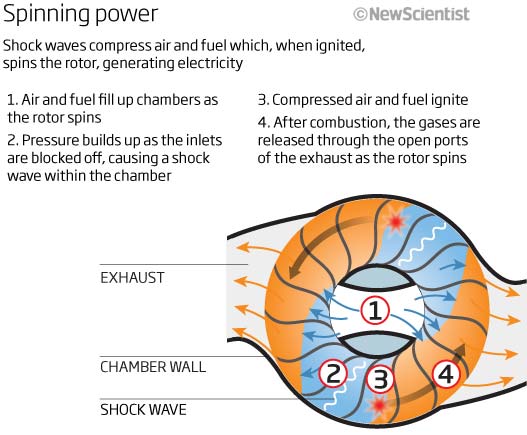A standard internal combustion engine follows a thermodynamic cycle known as the Otto cycle. The first and third steps of the Otto cycle are quasi-parallel isentropic processes (frictionless, adiabatic reversible), and the second and fourth steps of the cycle are parallel isochoric processes. In terms of the actual mechanics of the engine, a mixture of air and fuel is first brought into the engine when the piston moves down the cylinder. The mixture is then compressed by the piston moving back up the cylinder. When fully compressed the mixture is ignited, which pushes the piston back down the cylinder. The cycle is finished by the exaust being pushed out of the cylinder as the piston moves back up.
The wave disk engine, on the other hand, follows a thermodynamic cycle known as the Humphrey cycle. The first and third steps of the cycle are isentropic compression and expansion processes. The second step of the cycle is an an isochoric heat addition process and the fourth step is an isobaric heat rejection process. The wave disk engine is a type of pistonless rotatary engine, meaning that instead of using a piston like in the internal combustion engine, the design uses a rotor to transform chemical energy into mechanical energy. As the rotor of the wave dusk engine spins, a fuel and air mixture fills up the chambers of the disk. As the rotor continues to spin, it blocks of the inlets that this mixture went through, causing the pressure to build up in the chambers. The mixture ignites, spinning the rotor, and the exhaust is released when the inlets become once again uncovered.
The wave disk engine operates at a higher engine than the standard internal combustion engine, so by Carnot's Theorem the engine is theoretically more efficient. According to the research team, while the standard internal combustion engine has an efficiency of around 20%, the wave disk engine can reach a theoretical efficiency of about 60% (the keyword being theoretical). The engine's lighter weight and simpler design also lead to increased utility and cheaper manufacturing.


